Every day I work with people who are actively pursuing their creative vision. They are writing books, making art, launching businesses and crafting ideas.
I’ll bet that’s you.
But if you are like many people I speak with, you struggle to find the time and energy to make it happen. You are juggling so many things that matter deeply to you, including family, a job, health, home, and so much else.
So today, as far as it comes to you pursuing your creative goals, I want to encourage you to do one of two things:
- Commit.
- Give up.
This is a choice. Make it. No, you are not making that commitment to me, but to yourself. To those you hope to reach. The rest of this post are a few ways to parse through that decision.
If it matters to you, take action
In a mastermind group I run, I recently mentioned that so many people recite the phrase “If you don’t have your health, you don’t really have anything.” Yet, there are plenty of people who say this who eat garbage every day, can’t stick to an exercise routine, and leave any aspect of mental health completely unaddressed. They are stressed, and they are not giving their body or minds what it needs to be healthy.
They say one thing. They do another.
Too often we say we value things that we do nothing to uphold.
I would encourage you to be clear about what matters most to you. Write down the five things that you care about more than anything, across your entire life. This can be family or finance or writing or healthy or supporting a cause or so much else.
Done? Okay, did your creative work make it into the top five? If not, maybe you should let it go, and refocus your energy on the things that do make it into your top five.
Does that offend you? That I suggested you give up on your creative work? I don’t mean for it to. I simply want to honor the limited resources of energy, focus, and time that you have.
Commit one way or another. If you do commit, write it down. In big letters. In permanent marker. On the wall next to where you write or create.
Worried about ruining the wall? You can always paint over it. You cannot get back the years where you left your dream to rot, unattended to because you were busy attending to other priorities.
This is a commitment to yourself. To those you hope to reach with your work.
If you can’t commit, that’s fine. But make the choice. Don’t half-ass the choice. Feel the thrill of commitment one way or another.
Focus like you are drowning
If there is an audience you want to reach, forgo “best practices.” Stop updating social media with the same retweets as 1,000 other people, the same vague hashtags that no one follows, and the same resharing of quotes that everyone else is resharing.
Instead, focus intently on what they love, what they need, what they hear, how they hear, who they hear it from.
Let me frame it this way:
If you were drowning, would you put a flyer on a bulletin board at the laundromat, asking for help? Something that said: “Wanted. Part-time assistance with my drowning. Must have own car and life preserver. CPR preferred.”
No. You would cry out at the top of your lungs. You would flail. You would make the biggest ruckus you could possibly make.
In other words: if there is something you DESPERATELY want, don’t take the most boring, safe, least-effective means to try to get it.
Who you know matters
I understand that we all want to believe that success comes purely from crafting work of the highest quality. The reality is often that much of success is also about who you know, and how well you develop those relationships. I don’t mean that in a smarmy “exploit influencers” kind of way.
For example: I am volunteering for the third year in a row at a local literary festival: the Morristown Festival of Books. Each year, the event has grown dramatically in terms of authors, moderators, volunteers, sponsors, partners, and so much else.
Did it happen just because it was a great idea? From what I have observed, relationships — who you know — has been key in founding and growing this event.
Much of this Festival was put together based on someone knowing someone else. For instance, I’m on the marketing team, focused on social media. I forget exactly how my involvement came about, but it was something like this:
- Linda started the festival and knew Karen, who said she would help out with publicity.
- Karen knew Deanna, who decided to help out with marketing too.
- Deanna knew me, and I decided to help out with social media.
- And this goes further. I knew Barb who owned a local bookstore which needed a manager, and my connection with Deanna lead her to Barb, and now she is the manager.
Can you see how much of this is built based on knowing people?
Now, you may be reading this and feeling a sense of anxiety, thinking, “But Dan, I’m an introvert. It is difficult for me to interact socially and make new friends.”
I get that. But I would encourage you to take action anyway. In many ways, I’m an introvert. When I first talked to Karen and Deanna about volunteering at the Festival, I said I would do so, but with one caveat: I don’t attend meetings. Meaning: I wouldn’t be attending any of those big meetings with dozens of volunteers and a long agenda.
I explained how I’m uncomfortable with aspects of big group meetings, that I do better with smaller, more personal conversations.
In other words, even though I’m an introvert, I was able to help out with the Festival by setting up some boundaries that made me comfortable.
I would encourage you to connect with more people who are passionate about the same creative work that you are. Because these people will become instrumental in helping you get your work made; to connecting it with others; to ensure it has an effect in people’s lives.
Yes, I know this process of connecting can feel uncomfortable. We all want an audience to magically find our work and spread the word on their own. And I suppose that does happen, but not usually. Usually you have to get to know people. So, do that.
No, don’t spam “influencers.” Just be a human being connecting with another human being in a way that feels meaningful.
3-4 creative hours per day
From what I can tell, most people have 3-4 solid creative hours per day in them.
For instance, if you are a full-time writer, whose kids leave for school at 7am, that means if you sit down to write at 8am, you will be done with writing by 11am or Noon. Sure, many people do more, but a lot of full-time authors I know instead fill in the rest of the day with other tasks. Marketing, business, non-creative aspects of their writing.
They have 3-4 hours in them of pure creative work, and after that, their well runs dry. This is 100% okay. I talk to so many writers who are trying to go full-time, and feel horrible that they can’t write for 8 hours straight. Which is a shame, because for many people, that is a completely unrealistic expectation.
If you have a day job, or any other major responsibility, it all pulls from the same 3-4 hour bucket of creative energy. Do you have two kids under four at home? They will definitely pull from that bucket of creative energy.
I never encourage people to seek more hours in the day, because I am such a strong believe in the value of sleep. Instead of trying to find 30 more minutes in a day, instead focus on how you allocate that bucket of creative energy.
It is a finite resource, but one that you have control over. If you are like most people, the idea of being able to spend 3 hours per day on creative work sounds like hitting the lottery. Instead, begin with 15 minute increments per day.
Establish that habit — find 15 minutes per day to take action with your creative work.
You will have to work harder or get luckier than the next person
I’m a fan of YouTuber Casey Neistat’s who explains this really well. He says that he knows people are smarter with him, better connected, have more money, get luckier, and are more talented. But where he can compete in the marketplace to find success is that he will work harder than everyone else. That is his competitive advantage.
In a crowded marketplace where it can be easy to feel envious of others who find success more quickly than you, I would encourage you to keep Casey’s worldview in mind. He summarizes it as “work harder.”
If that isn’t the lifestyle you want, that is fine! Seriously. Stop doing your creative work. Stop worry about how to publish it. Stop worrying about how to share it. Just make it a hobby, not a profession.
Instead, use that creative energy to things that matter deeply to you. Spend time with family. Spend time meditating in your garden. Spend time volunteering. Spend time doing your day job so much better. Spend time with your spouse or lover. Spend time with your parents, because they won’t always be there. Spend time with your kids because I don’t ever remember hearing anyone say, “My one regret is that I spent way too much time with my kids when they were growing up.”
I don’t say this as a challenge, but as a viable option: maybe you should give up on your creative dreams. All I ask is this: if you do, give up with VIGOR. Put that love, that vision, that passion into something else. Into someone else. Into brightening someone’s day or creating experiences for yourself or others that you will one day look back on and smile.
But if you won’t give up on your creative vision. Then double down on it. Stop waiting to learn all the “best practices.” Take action.
What is the first action you can take to double down with vigor one way or another?
Thanks.
-Dan

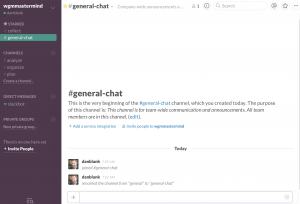
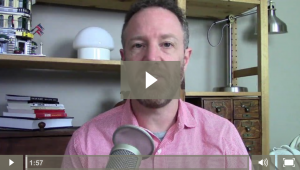

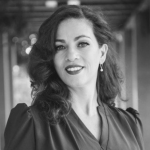 “This group has lit a fire under me. It has created energy and momentum with my writing. Plus: I’m having so much fun!”
“This group has lit a fire under me. It has created energy and momentum with my writing. Plus: I’m having so much fun!” “I’m telling you, these Masterminders are a generous and creative and supportive group. And that Dan Blank is generous and helpful beyond the beyond.”
“I’m telling you, these Masterminders are a generous and creative and supportive group. And that Dan Blank is generous and helpful beyond the beyond.” “There are so many layers of emotional and creative spirit in this group. I can feel positive momentum building.”
“There are so many layers of emotional and creative spirit in this group. I can feel positive momentum building.”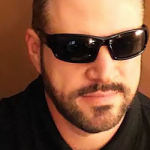 “Dan promised me collaboration when I signed up for this group. I had my doubts, but not anymore. Being a part of the the Mastermind group has brought so much clarity (and simplicity) to my creative work.”
“Dan promised me collaboration when I signed up for this group. I had my doubts, but not anymore. Being a part of the the Mastermind group has brought so much clarity (and simplicity) to my creative work.” “Dan’s Mastermind group is a safe haven for creators and writers. Dan and my fellow Mastermind participants helped me define the direction for my writing and reach more readers through my website, blog and social media. I recommend this group to anyone looking for support and direction in their creative projects.”
“Dan’s Mastermind group is a safe haven for creators and writers. Dan and my fellow Mastermind participants helped me define the direction for my writing and reach more readers through my website, blog and social media. I recommend this group to anyone looking for support and direction in their creative projects.” “WOW. I’m really blown away (seriously, not exaggerating) by the kind, helpful responses in this group. When I signed up, I had wondered if I was doing the right thing by joining this Mastermind –– I was afraid I wasn’t really ready for the step. But now I see that this is exactly what I needed.”
“WOW. I’m really blown away (seriously, not exaggerating) by the kind, helpful responses in this group. When I signed up, I had wondered if I was doing the right thing by joining this Mastermind –– I was afraid I wasn’t really ready for the step. But now I see that this is exactly what I needed.”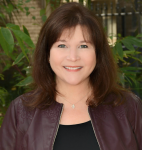 “I believe that Dan Blank has created MAGIC here. This group has held me accountable to making a positive change in my creative work — I have never been a part of something this powerful before!”
“I believe that Dan Blank has created MAGIC here. This group has held me accountable to making a positive change in my creative work — I have never been a part of something this powerful before!”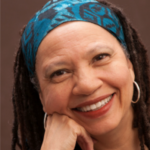 “This Mastermind has given me a sense of direction with the business side of my writing that I’ve never had before.”
“This Mastermind has given me a sense of direction with the business side of my writing that I’ve never had before.” “This Mastermind is building camaraderie with like-minded people for the first time in my life. I have never felt so alive. I can’t even explain it. Even with all my past successes nothing has brought me as much fulfillment as this group and each individual in it.”
“This Mastermind is building camaraderie with like-minded people for the first time in my life. I have never felt so alive. I can’t even explain it. Even with all my past successes nothing has brought me as much fulfillment as this group and each individual in it.”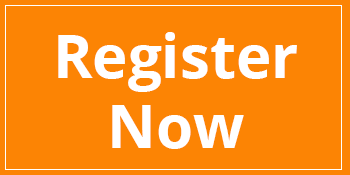
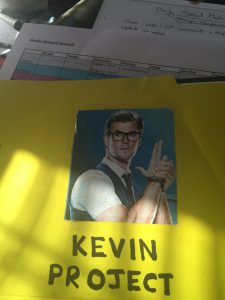 A writer I know
A writer I know